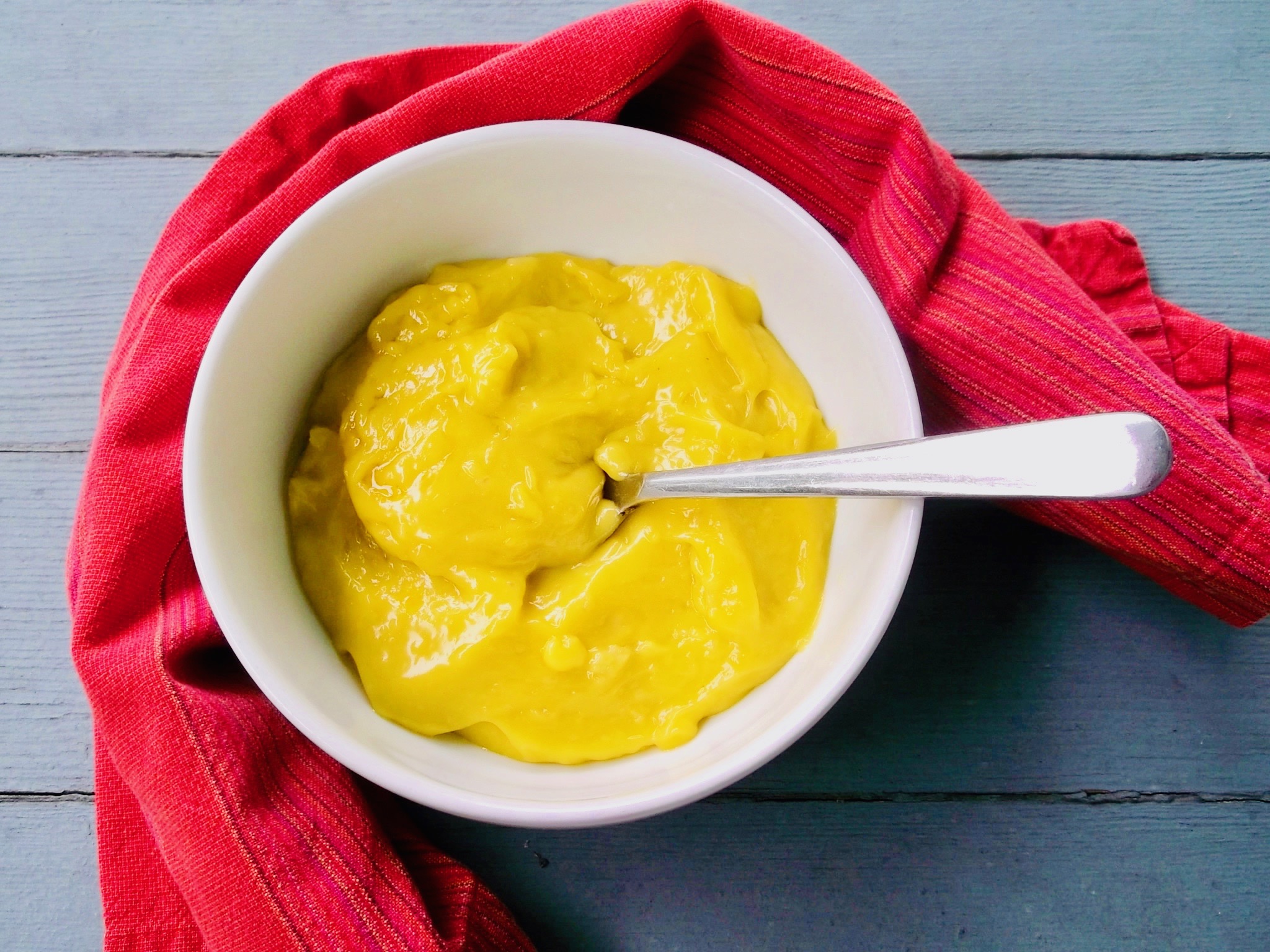I rediscovered aioli, a garlicky Provencal-style “mayonnaise” amid a July heat wave that knocked us off our feet—straight into a languid torpor.
In my fantasies, I was in Peter Mayles’ Provence—lounging poolside, glass of rosé in hand, basking in sunshine, the scent of rosemary, thyme and lavender perfuming the air. All the while…daydreaming about my next meal.
My reality, however, was much less elegant. Ensconced at our old farmhouse in upstate New York—sans air conditioning, sans pool—I sweated bullets and felt overdressed in a bikini. In addition to taking cold showers every night, I resorted to scrubbing out our refrigerator (a long overdue project) for cool relief.
Oddly, despite the physical exertion involved, I felt urgently compelled to make aioli.
In the south of France, aioli is a quintessential warm weather condiment. Aioli pairs beautifully with everything and anything—grilled fish or meat; as a dipping sauce for pommes frites ; smeared on grilled bread or heirloom tomatoes. In Provence, “aioli”, as a traditional dish, is served with boiled vegetables, boiled fish and boiled eggs.
On this particular sweltering Sunday, I was envisioning an early supper of cold poached chicken and corn on the cob, both slathered with aioli.
The irony of this craving? Traditional aioli calls for raw egg yolks. Truth be told, I have egg “issues”. Omelets, frittatas and scrambled eggs are just fine. But I balk at hard-boiled or soft-boiled eggs because of the sulfuric smell and rubbery egg white texture. Eating raw eggs? Well, that felt inconceivable!!
One advocate of raw egg consumption is Dr. Natasha Campbell-McBride, M.D., a Russian-trained neurologist and neurosurgeon, who created the GAPS (Gut and Psychology Syndrome) diet, which focuses healing the gut. As the parent of an autistic child, and in her work with children who had various learning and behavioral problems (from ADHD and dyslexia, to dyspraxia), Campbell-McBride saw a clear link between digestive abnormalities and brain health.
Eggs, especially the yolks, feed the brain. Campbell-McBride points out that eggs are one of the most nourishing and easy-to-digest foods. Especially raw egg yolk. Like human breast milk, raw egg yolk can be absorbed 100% without requiring digestion. Nutrient-dense egg yolks provide most essential protein-building amino acids; essential fatty acids, vitamins A, E, D, K and B-complex; as well as zinc, magnesium, iron and phosphorus; and carotenoids, such as lutein and zeaxanthin. Eggs from free-roaming, pasture-pecking hens are also rich in vitamin B12, vital for normal development of the nervous system and immunity.
Are you having more “senior moments” then you care to admit?! Egg yolks are one of the best food sources of choline, an amino acid and building block for the neurotransmitter acetylcholine, which helps the brain learn, process and remember information.
Properly sourced, eggs are a near-perfect superfood, provided, of course, you do not have a true egg allergy (in which case, you are most likely reacting to the egg white).
How did I overcome my apprehension of a condiment made with raw eggs?
–By remembering a phenomenal meal at La Bastide de Tourtour, a gastronomic restaurant tucked away in the hills of the Haut Var (eastern Provence), to which a winemaker and his wife had whisked us away to sample his wines: aioli had been a delectable, spotlight-stealing highlight.
–By using pastured-raised eggs from local farms. Salmonella is a real concern—especially if we are talking about eggs from commercially bred, factory-farmed chickens. I have personally visited local farms to see how the animals are raised. When I can see for myself that chickens are actually outside and “free-range”, I feel confident thatt what I am consuming is from a healthy bird.
–And…by stumbling upon David Lebovitz’s authentic Provencal-style aioli recipe.
My version of Lebovitz’s aioli recipe ramps up the garlic and uses two pastured egg yolks instead of one. When I make aioli, I buy the freshest eggs possible; ideally, eggs gathered that morning. It’s also best to consume all of the aioli within 24 hours after making it (hardly a challenge in our house!).
Whisking aioli works up a sweat! The end result is well worth the effort. Smooth and creamy with a distinct garlicky tang and golden color, aioli is a luscious indulgence that gives you a true taste of “real mayonnaise”.
My personal bottom line: Don’t eat raw eggs unless you know—and trust—the source. I will only eat eggs raw if they are from pasture-raised hens—and from a farm that I have personally visited. Just because eggs are labeled “organic”, “vegetarian-fed”, or “all natural” does not ensure that they are safe to eat raw . Connect with a trusted source for pastured eggs, if only because this hand-made aioli rocks!
Aioli
4-5 cloves organic garlic
1/2 teaspoon Celtic sea salt
2 large egg yolks from pastured hens, room temperature
1 cup of quality, extra-virgin olive oil
Place garlic and Celtic sea salt in a mortar or medium bowl; use a pestle to crush and mash well until the mixture forms a paste. (If you don’t like your aioli “too” garlicky, set aside some of the mashed garlic mixture and add back later, if desired.)
Add the egg yolks.
Anchor your bowl by wrapping a dish towel tightly around the base of your bowl, and place on a wooden cutting board—or other non-slip surface.
As you whisk egg, garlic and salt, slowly drizzle in the olive oil, adding approximately 1/4 cup at a time. The aioli will emulsify and thicken. Vigorously whisk until all of the olive oil has been incorporated.
Serve with poached chicken, shrimp, cod or vegetables.
Bon appétit!
Sources:
Gut and Psychology Syndrome by Dr. Natasha Campbell-McBride, MD, MMedSci (neurology), MMedSci (nutrition)
Eat Your Eggs and Have Your Chickens Too


